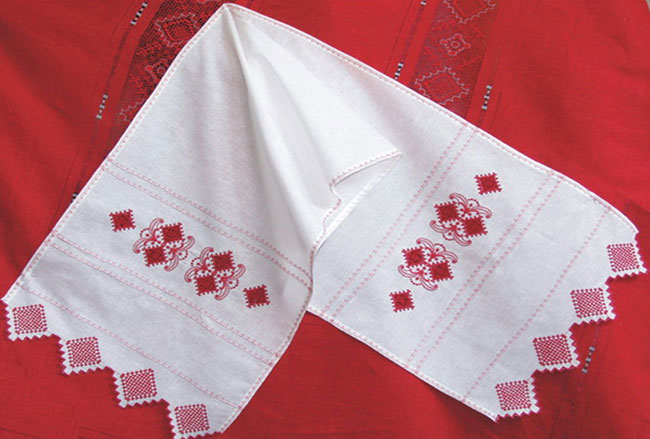Carpet embroidery: a few more stitches
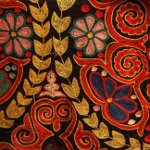 In its past material, the Country of Soviets described what carpet embroidery is, and what carpet seams are. In this article we will dwell on several more tapestry seams.
In its past material, the Country of Soviets described what carpet embroidery is, and what carpet seams are. In this article we will dwell on several more tapestry seams.For embroidery large works well suited seam "Renaissance". It is embroidered on a double canvas. First, we draw a thread between two pairs of horizontal threads of the canvas lying close to each other. On top of this thread, make horizontal stitches from the bottom up. In doing so, we draw the needle through large canvas openings and lay a working thread through two pairs of threads of the canvas. Having finished one happy, go to the next on the wrong side.
Original looks eastern seam. It is executed by oblique (sloping) stitches. The first stitch is embroidered through one interlocking of the double canvas, the second - through two, the third - through three, and the fourth - through four. We get triangles, which follow each other obliquely. To fill the empty space between them, use the oblique tapestry seam.
Seam «Korzinochka» we begin to embroider from the corner of the canvas. Stitches are placed in the order shown in the picture. Each new stitch begins between the two stitches of the previous row. This seam requires a significant thread consumption and does not create a noticeable carry on the canvas.
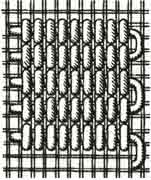
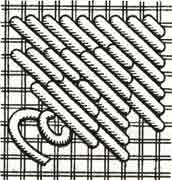
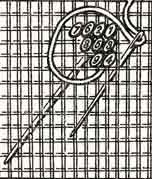
There are some very simple stitches, which do not even need to be further explained - the technique of their implementation is clear from the diagrams. These seams are called "Fern", "The seam twig" and Crossed Crosses.
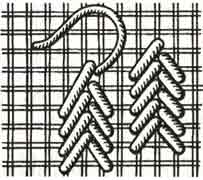
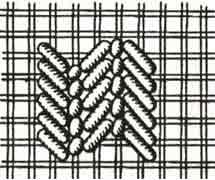

Now let's move on to more complicated seams. If you want to embroider the imitation of the oriental carpet, you need to master velvet (Astrakhan) seam. It is embroidered on a thick double canvas ordense fabric with fluffy woolen threads. Velvet suture is performed in horizontal rows, which are accumulated from the bottom up. We draw a needle through a cell of the canvas, make a free loop and immediately fix it with a cross - and so in each cell.
To make the loops smooth, we throwthem through a stick, which we put in the direction of the horizontal row. When the row is finished, we pull out the stick and apply it to the next row. The length of the loop is calculated based on the fact that each loop should cover two cells of the canvas in the vertical direction. The eyelets of each next row close the crosses of the previous one.
Having finished embroidering, cut the loops along the vertical rows using sharp scissors. If the pile came out uneven, carefully trim it with scissors.
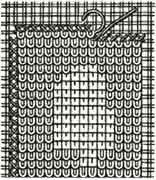
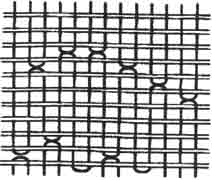
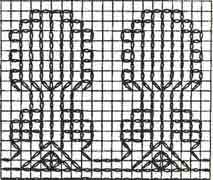
An interesting kind of carpet embroidery is Kelim embroidery. This ancient kind of oriental embroidery is veryeasy to perform and incredibly beautiful, but requires a lot of time. The main thing in this embroidery is to choose the right colors. Weaker tones are amplified by bright contours, and bright tones are weakened. Two homogeneous tones are separated by neutral. Most of the figures of eastern embroidery are bordered by a strip of black or dark blue.
For embroidery Kelim used strong and densethread. Particular attention must be paid to the execution of contours - it determines the correctness of the entire figure. After embroidering the contour, you can proceed to fill the background with straight lines (it does not require special attention). Light colors are embroidered after dark and as if superimposed on a dark background. Threads should be stretched evenly.
In principle, this is practically all major seams and techniques of carpet embroidery. Carpet embroidery can be used not only for making carpets, but also for finishing handbags, furniture ... yes for anything!


